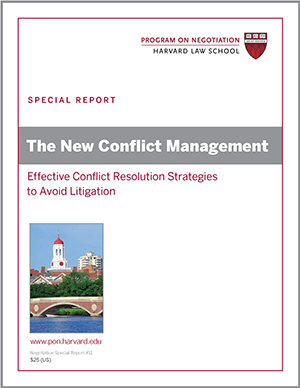
In integrative negotiations, cooperation in joint-fact finding is common. Sometimes parties to a dispute disagree on key facts and forecasts but lack the technical or scientific expertise needed to come to a consensus.
Here’s an example. Suppose, for instance, that a developer is seeking to build a high-rise condominium building in a village that is experiencing a development boom. Longtime residents fight the proposal, arguing that another tall building would increase congestion and noise. The company hires a consulting firm, which presents a study showing that the building would bring more benefits than harm to the village. The residents hire their own experts, who draw the opposite conclusion. The two sides remain at a stalemate, and the village council is divided as well.
Joint fact-finding is a multistep collaborative process for bringing together parties in such technical disputes, as MIT professor Lawrence Susskind and his colleagues describe in The Consensus Building Handbook (Sage Publications, 1999). Rather than hiring their own experts to analyze a situation, parties decide to work together cooperatively and decide how information should be gathered, analyzed, and interpreted.
Ground Rules and Establishing an Agenda
Disputants begin by setting a fact-finding agenda and ground rules for the process. Together, they decide on the issues that require technical analysis, the questions that experts should ask, and how to move forward after receiving a technical analysis. Next, parties work together to find and select one or more advisers. The developer and the village residents, for example, might choose to hire a professor who studies traffic and noise abatement. Advisers present their analyses and various courses of action to all parties involved. To maintain their objectivity, experts should refrain from recommending one particular solution.
Joint fact-finding educates parties about the science behind the issues at stake. In doing so, it spurs agreements that are more credible, creative, harmonious, and lasting than those developed using a traditional “adversary science” process. Although a shared set of unbiased conclusions doesn’t guarantee that parties will come to an agreement, it does ensure that they won’t dismiss technical matters out of hand.
Joint fact-finding may not be the right choice if the more powerful or knowledgeable party might seek to use it as leverage to maintain the power imbalance. If the village council already strongly supported the condominium project, for instance, residents might not benefit from a joint fact-finding process. They could focus instead on working with the council to create a joint task force that would survey residents and develop a long-term vision for the village.
Do you have any other advice to help with integrative negotiations? Share your tips in the comments.
Adapted from “Find Consensus through Joint Fact-finding,” first published in the Negotiation newsletter, January 2008.





